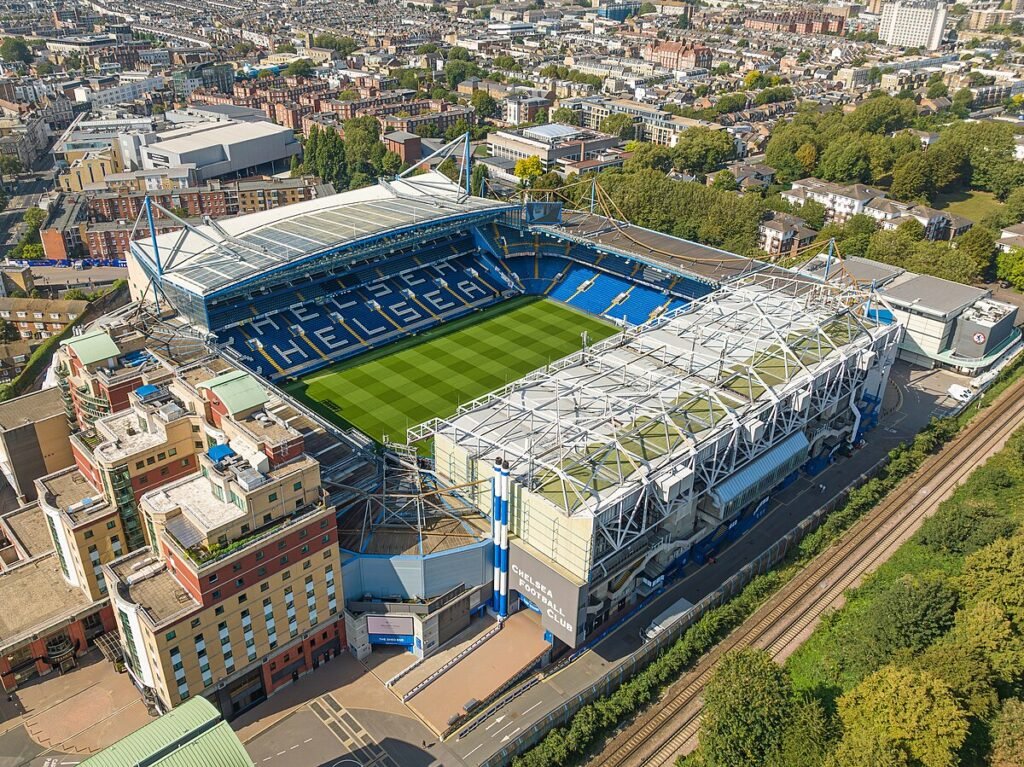The United Kingdom is home to some of the most iconic sports venues in the world. Whether you’re a football fanatic, a rugby supporter, or a concert lover, the stadiums in the UK offer more than just a place to watch the game. But have you ever wondered what the biggest stadium in UK is? This comprehensive guide will take you on a journey through the country’s most monumental sporting arenas exploring their capacity, history, and what makes each of them a must-visit destination.
Wembley Stadium The Biggest Stadium in UK
Without question, Wembley Stadium in London holds the title of the biggest stadium in UK. It’s not just big it’s a national symbol. Built on the site of the old Wembley Stadium, the new structure opened in 2007 and quickly became the pride of British sports and entertainment.
Capacity and Structure
Wembley boasts an astonishing seating capacity of 90,000, making it the largest stadium in the UK and the second-largest stadium in Europe after Barcelona’s Camp Nou. The stadium features a retractable roof and an iconic 133-metre-high arch visible from across the city.
Primary Uses
- Home to the England national football team
- Host of the FA Cup Final, Carabao Cup, and EFL Playoffs
- Regular venue for NFL London Games
- Concerts featuring global superstars like Beyoncé, Ed Sheeran, and Coldplay
Why It Stands Out
Wembley isn’t just the biggest stadium in UK, it’s a modern masterpiece. It combines technology, size, and atmosphere in a way few venues can. The sound, the crowd, and the experience are unforgettable.
Other Massive Stadiums Worth Mentioning
While Wembley takes the top spot, several other stadiums come close in size and significance. Let’s explore some of them below.
Old Trafford Theatre of Dreams
Located in Greater Manchester, Old Trafford is the home ground of Manchester United. It is the second biggest stadium in UK, with a seating capacity of 74,310.
Key Highlights
- Opened in 1910, it’s steeped in football history.
- Known globally as “The Theatre of Dreams.”
- Regularly hosts Premier League, FA Cup, and European matches.
Old Trafford is more than just a football ground; it’s a spiritual place for millions of fans.
Tottenham Hotspur Stadium The Modern Marvel
Tottenham Hotspur’s stadium in North London is one of the most advanced stadiums in the world. It opened in 2019 and has a capacity of 62,850, making it the third biggest stadium in UK in terms of football venues.
What Sets It Apart?
- Dual-purpose design: can switch between football and NFL configurations
- Unique glass tunnel for fans to view players up close
- Boasts the longest bar in Europe!
This stadium is setting the bar for future sports architecture globally.
Emirates Stadium Arsenal’s Home Fortress
Another major London venue, the Emirates Stadium, is home to Arsenal Football Club. Opened in 2006, it seats around 60,704 fans and is the fourth biggest stadium in UK.
Features
- Stunning bowl-style design for better crowd acoustics
- Host to international matches and music events
- Well-connected through London’s public transport
Despite not being the largest, the Emirates is known for its class, cleanliness, and matchday experience.
London Stadium Olympic Legacy Lives On
Originally built for the 2012 London Olympics, the London Stadium now serves as the home of West Ham United and a multi-purpose venue.
Capacity: 60,000+
The transformation from an Olympic arena to a football venue shows London’s ability to adapt world-class infrastructure for long-term use.
Not Just Football Other Major Stadiums
Though football dominates stadium culture in the UK, there are other arenas worth mentioning across sports.
Twickenham Stadium Rugby’s Spiritual Home
Located in southwest London, Twickenham Stadium is the largest rugby union stadium in the world and the biggest stadium in UK dedicated solely to rugby.
Capacity: 82,000
- Hosts England Rugby matches and Six Nations events
- Frequently used for concerts and NFL games
- Offers an incredible view from every seat
Murrayfield Stadium – Heart of Scottish Rugby
Situated in Edinburgh, Murrayfield has a capacity of 67,144, making it the largest stadium in Scotland.
Key Uses
- Home of the Scottish Rugby Union
- Host for major concerts and community events
Principality Stadium Welsh Glory
Located in Cardiff, Wales, Principality Stadium (formerly Millennium Stadium) has a seating capacity of 74,500 and regularly hosts Wales rugby union, football, and concerts.
Comparison Table Top 10 Biggest Stadiums in UK
| Rank | Stadium | City | Capacity |
| 1 | Wembley Stadium | London | 90,000 |
| 2 | Old Trafford | Manchester | 74,310 |
| 3 | Principality Stadium | Cardiff | 74,500 |
| 4 | Twickenham Stadium | London | 82,000 |
| 5 | Murrayfield Stadium | Edinburgh | 67,144 |
| 6 | Tottenham Hotspur Stadium | London | 62,850 |
| 7 | Emirates Stadium | London | 60,704 |
| 8 | London Stadium | London | 60,000+ |
| 9 | Etihad Stadium | Manchester | 53,400 |
| 10 | St James’ Park | Newcastle | 52,305 |
The Economic Impact of Large Stadiums
Large stadiums are not just about size they are also economic engines.
Benefits Include:
- Tourism Boost: International matches and concerts attract visitors.
- Employment: Stadiums support thousands of jobs on event days.
- Local Economy: Nearby restaurants, hotels, and transport benefit directly.
Stadiums and Culture A Deep Connection
Stadiums are more than buildings; they are emotional centres. Fans cry, laugh, sing, and unite inside these massive arenas.
They Represent:
- Identity: A club’s soul and history
- Unity: A place where fans of all backgrounds come together
- Tradition: Venues like Old Trafford and Twickenham are woven into national heritage
Future of Stadiums in the UK
As technology advances, UK stadiums are evolving rapidly.
Trends to Watch:
- Smart Stadiums with 5G and facial recognition
- Eco-Friendly Construction using sustainable materials
- Multi-Use Design for concerts, esports, and community events
With plans underway for potential expansions and new builds, the competition to be the biggest stadium in UK may heat up again.
How to Visit These Stadiums
Whether you’re a local or a tourist, visiting a stadium can be a thrilling experience.
Tips:
- Book guided tours: Many venues offer behind-the-scenes access
- Buy tickets early: Major matches and concerts sell out fast
- Use public transport: Parking can be limited on event days
Final Thoughts The Legacy of the Biggest Stadium in UK
The biggest stadium in UK, Wembley, is more than just a large venue it’s a place where history is written. From unforgettable football finals to jaw-dropping live performances, it continues to unite fans from all walks of life.
Other major stadiums across the UK also hold their unique place in sport and society, creating lifelong memories for millions.
So, whether you’re planning your first stadium visit or just exploring your love for sports infrastructure, remember these iconic venues are more than just seats and steel. They’re the beating heart of British sport and culture.


